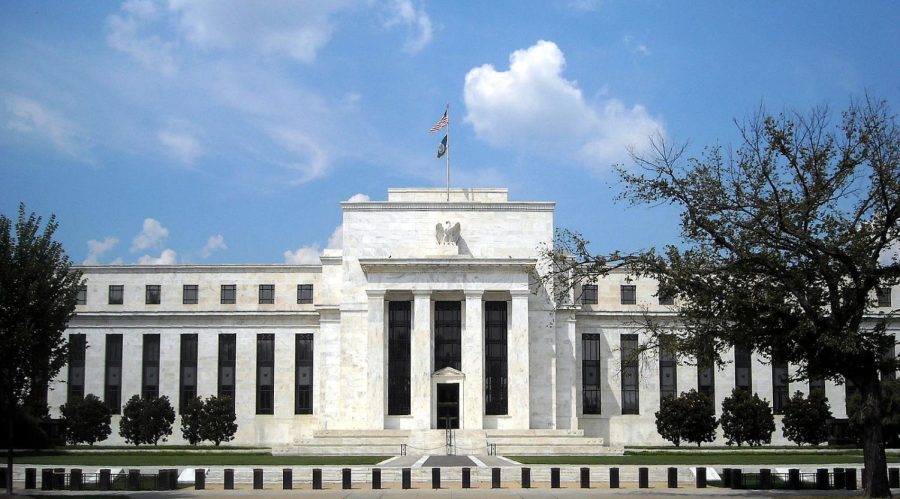Federal Reserve announces first interest rate hike
March 25, 2022
After a long wait, Federal Reserve Chair Jerome Powell announced the first hike on the interest rates on March 16.
With a vote of 8-1, the Fed announced it would raise the target range for the interest rate of 0.25% to 0.5%. It signaled that it would raise rates six more times this year in an effort to slow the four decade-high inflation.
This marks the first time the Fed raised rates since 2018, when it increased the interest rate from 1.5% to 2.5% over the course of the year. With unemployment declining and economic activity strengthening, taming inflation to keep prices stable was the last macroeconomic goal left.
Additionally, the committee is expected to begin reducing holdings of treasury securities and agency debt and agency mortgage-backed securities at a coming meeting. As a result, officials project a raise to around 2.75% to 3% by the end of 2023; this will mark the highest since the 2008 financial crisis.
Following the Fed’s announcement, U.S. stock indexes hiked, with the Dow Jones Industrial Average closing on March 18 with a 5.5% and the S&P 500 closing with a 6.2% gain. Additionally, the benchmark 10-year treasury note rose 2.16%.
The supply chain gridlock and rising labor force participation are the two factors that could bring down inflation but have not occurred. Additionally, the western sanctions on Russia have made matters worse, forcing the Fed to take action.
The federal funds rate, an interest rate used to guide lending among U.S. banks, is a prime interest rate that affects consumer and business borrowing costs throughout the economy. These include rates on mortgages, credit cards, saving accounts, car loans and corporate debt.
Therefore, how much other interest rates rise will depend on the responses of investors, businesses and households.
Essentially,, raising interest rates also raises the federal funds rate, increasing the cost of borrowing money and discouraging spending. Hence, it reduces inflation.
The Fed’s next interest rate can only be determined by how much inflation is moderated. It will be announced on May 3 or 4, when the Fed announces how it plans to shrink its $9 trillion dollar portfolio as a part of its tapering efforts.
The first hike’s impact on consumers is not a lot, but the cumulative total impact of the hikes can have a significant impact on consumers, the job market and the economy.
The hike will impact individuals with loans and financing tied to a prime rate, also known as the variable rate. However, it is important to note it is not a huge difference to fear so far.
One way to ensure financial protection is through online savings accounts with higher interest rates. By tracking competitive online savings banks, consumers are able to shop for the most competitive rates.
Another way is by supplementing savings with Series I savings bonds. These bonds are available from the U.S. Treasury and are indexed with the Consumer Price Index, with a yield that includes a fixed rate for the bond’s duration which can last up to 30 years.
Today, the Fed sees a higher rate of employment and higher wages as a severe impediment to curbing inflation.
Powell has mentioned at the Federal Open Market Committee that the U.S. economy is “very strong” and will bear a tighter economic policy. Luckily, he wasn’t threatened to be fired by President Joe Biden, unlike in 2018 when the hike upset Biden’s predecessor and investors.
However, there is a really thin line the Fed fears to cross. A slow shift might allow inflation to run out of control, making tougher actions compulsory. On the other hand, a fast shift will cause central banks to agitate markets and trigger an economic recession.
The current geopolitical situation in Eastern Europe, adding to the threat of prices, growth and financial market stability, is nostalgic for many who have lived through 1970s stagflation.
The Fed will be closely observed in the coming months to assess if it will successfully seize inflation. Its efforts to tame inflation will determine the outlook of the economy and investors’ next moves.








